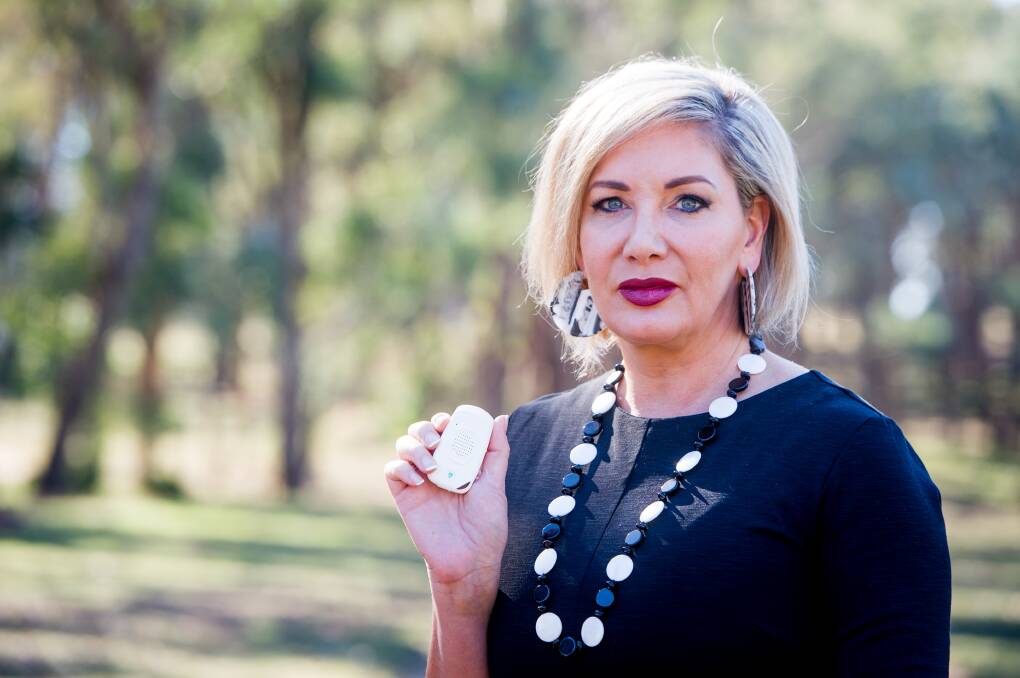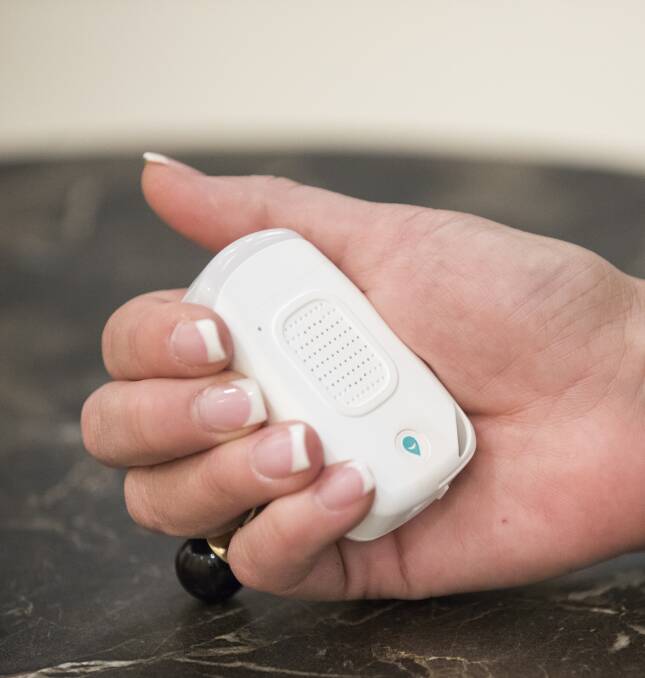Like many women, Stephenie Rodriguez was taught to hold her car keys in between her fingers in case she got into trouble while walking in the street.
Subscribe now for unlimited access.
or signup to continue reading
In theory, the car key would act like brass knuckles if push came to shove. But, as Ms Rodriguez points out, that plan only works if you can box like Floyd Mayweather.

"It gives us a sense of security but it doesn't actually help us in the face of peril," she says.
While it's easy to believe that "the face or peril" will never actually happen, the reality is that it does.
Ms Rodriguez has been a solo traveller since she was 18, travelling to 55 countries, and has used her own experiences inspired to her to create something that would help anyone who "has ever felt unsafe in an elevator, in a dark corner, or commuting or walking to a car at night".
"There was a hotel in Geneva and it was 7 o'clock in the morning and I had just arrived late at night after 36 hours from coming from Australia," she says.
"I was on business and I got on the lift and a drunk, very big man propositioned me and put his hands on me. That was kind of stunning and I ran outside that I was in the middle of the red light district. I went, 'I got to fix this' and I started to think about this process of information and equipment."
That's when the Canberra mother came up with the WanderSafe Beacon.
The handheld device, which pairs with a free app, aims to provide awareness and information about the safety of an area and the equipment to help protect yourself if something did happen.
The beacons features were designed by Ms Rodriguez and a former CIA professional.
"The CIA has protocols about what keeps you safe and what to do and what to do first," Ms Rodriguez explains.
The first step - particularly in the dark - is providing illumination which is done at a touch of a button with a 1000 lumen light. If you click the button twice it then becomes a strobe light.
"In the event of someone coming towards me, I'm going to light them up so that I can see them - so they're not going to surprise me - and secondly the strobe light that pulses seven times a second is clinically disorienting," Ms Rodriguez says.
"If someone puts a strobe in your face, you can't think of anything else.
"When you combine the light and the noise, statistics show that if you have an alarm and a flashlight at the ready, you are 87 per cent less likely that someone with the intention to harm you will continue on that path.
"The third feature is 140-decibel siren. That is really, really loud.
"That siren is enough to one disorientate, [and two] attract attention from someone else. I might not be the best screamer under stress but that siren is going to do the heavy lifting for me and attract attention."

The final feature of the device is the SOS button, which when activated - and the beacon is paired with app - will send an SMS with an SOS and a map of your location to your three preset contacts, every 60 seconds until the user turns it off.
"All of those [features] are particularly important when you're walking to your car, walking across campus, going for a jog in an unknown place, they are all things that will help de-escalate and disarm and again, help signal for help if you need it," Ms Rodriguez says.
The WanderSafe app - which can be downloaded and used without the use of the beacon - also allows users to mark if a location has previously been seen as safe or unsafe, and allows people to add comments or photos of certain locations.
"The app is designed to send you a push notification to you in the case of - for example - if there is an act of terrorism going done like the Lindt Cafe in Sydney," Ms Rodriguez says.
"We thought that would never happen but it did and people lost their lives."
The product was heavily funded by Canberran investors, particularly businesswomen and was brought out to market in October. The beacon is already being stocked at airports across the world, and has won Best New Travel Accessory of 2019 in Singapore.
But while receiving such an award in less than 12 months from its launch is exciting, Ms Rodriguez has larger goals. She wants to impact a billion lives by 2025.
"Looking at a broader picture for every person who goes to work and school unharmed, that has a socioeconomic impact whether that be in Chicago, Canberra or Kenya," she says,
"If I can go to work and support my son then I am better for the economy, better for the environment and better for my community, and can provide him a life of wellbeing.
"And things like violence against women, peace and justice, life on land collaboration, just in doing what we do we support that. And it's exciting to see, in domestic situations what a difference we can make.
"Even with domestic violence, because our beacon allows us to signal for help faster than you could pick up your phone and do it silently and for cases of domestic violence, that's a very powerful feature."















